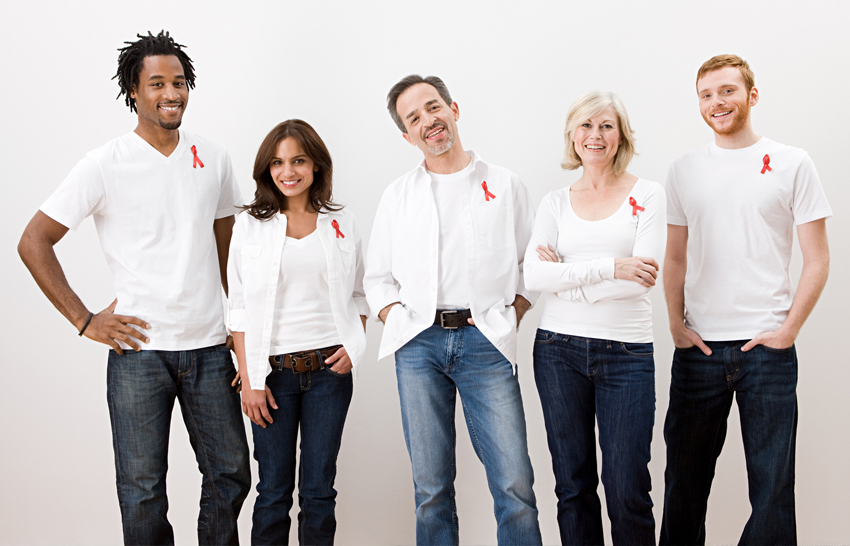

Despite significant progress, HIV remains a major public health challenge in California, where nearly 4,500 new HIV diagnoses occur each year.1 Black and Latino communities face a disproportionate burden of HIV compared to other racial or ethnic groups. For instance, among Black Californians, the rate of new HIV diagnoses is 4.3 times higher in men and 5.4 times higher in women compared to Whites. Similarly, Latinx individuals experience a significant impact from HIV, with rates of new diagnoses 2.2 times higher in men and 1.2 times higher in women compared to Whites.2 These statistics underscore the urgent need for targeted interventions and resources to address the HIV epidemic within these communities.
One promising intervention is PrEP, or pre-exposure prophylaxis, a highly effective medication taken by individuals at risk for HIV to prevent transmission. PrEP reduces the risk of contracting HIV by about 99% when taken as prescribed.3 However, despite its efficacy, only approximately 10% of the roughly 240,000 Californians who could benefit from PrEP currently have access to it.4 Significant disparities in PrEP use persist among racial and ethnic groups, with Black and Latino individuals, who collectively account for over three-quarters of new HIV diagnoses in California, representing less than a third of PrEP users.5
Several factors contribute to these disparities, including stigma, distrust of the medical system, lack of awareness among both patients and clinicians, limited availability of clinics providing PrEP, challenges in securing appointments, and an insufficient number of providers comfortable with prescribing PrEP.6 In response, policymakers have been exploring ways to increase PrEP uptake. In October 2019, California became the first state to authorize pharmacists to furnish a 30-to-60-day supply of PrEP without a physician's prescription and prohibits insurance companies from requiring prior authorizations for PrEP coverage. Additionally, the SB 159 bill requires pharmacists to complete a training program approved by the state Board of Pharmacy to be certified to furnish PrEP, expanding access and leveraging the credibility and accessibility of pharmacists, primarily in marginalized communities.
The potential impact of these policy changes is significant. Allowing pharmacists to furnish PrEP without a prescription expands access, increases the number of vulnerable individuals who use this effective HIV prevention modality, and can lead to reductions in new HIV cases, particularly in high-burden areas like the Inland Empire.7 For this purpose, in April 2023, Loma Linda University Schools of Behavioral Health and Pharmacy received a $750,000 grant from the National Association of Chain Drug Stores (NACDS) Foundation to implement a community pharmacist-led HIV prevention program in the Inland Empire. This innovative research project involving twelve pharmacies aims to improve access to pharmacy-based HIV services through screening, prevention, and linkage to treatment.
Community pharmacies have the potential to make a significant contribution to reducing disparities in HIV prevention and treatment. In California, pharmacies are strategically located to engage patients in HIV prevention efforts. Over 90% of urban residents live within 2 miles of a pharmacy, and approximately 70% of rural residents are within 15 miles of one.8 Given their proximity, community pharmacies are ideal partners for providing HIV prevention services. Pharmacies offer a non-stigmatizing and easily accessible setting for receiving health services, with more convenient business hours than traditional health clinics. Pharmacists, recognized as among the most trustworthy healthcare professionals, are readily accessible to their communities.9 The COVID-19 pandemic highlighted pharmacies' ability to offer access to tests and vaccines, demonstrating their potential to tackle public health emergencies. Pharmacists can leverage their expertise and community trust to address the HIV epidemic, employing similar strategies to enhance prevention efforts and improve health outcomes.
Efforts to streamline the implementation of pharmacy-based PrEP programs extend beyond California. States like Colorado, Nevada, and Utah have devised strategies to overcome challenges and expand access to PrEP. Unlike California, which restricts pharmacist-initiated PrEP to a 60-day supply, these states impose no limitations on the quantity of HIV-preventative medication a pharmacist can provide. Moreover, in Colorado and Nevada, plans are mandated to cover PrEP and reimburse pharmacists for laboratory testing, prescribing, dispensing, and administering medications at rates on par with physicians, facilitating broader access to this vital intervention.10 However, studies on SB 159 implementation in California indicate that only a few pharmacies effectively use the law to prescribe PrEP. Pharmacists cite challenges, including health plans not covering labor costs for preparing PrEP and the short 60-day window for referral to a primary care physician.
The newly passed SB 339, signed into law on February 6, 2024, learns from other states to address challenges that limited the widespread adoption of SB 159 in California. SB 339 mandates health plans to cover a 90-day supply of pharmacist-prescribed PrEP, with ongoing supply contingent upon patients receiving follow-up care and testing as per CDC guidelines. Additionally, the bill requires health plans to cover costs related to pharmacist services for PrEP provision, including testing. These measures aim to remove significant barriers to making PrEP available without a prescription. This new law represents significant progress in streamlining pharmacy-based PrEP programs and addressing remaining challenges to ensure equitable access to HIV prevention services. By leveraging the expertise and accessibility of pharmacists, California can make significant strides in combating the HIV epidemic and improving health outcomes for all residents.
Author Bio:

Alex Dubov, PhD
Dr. Dubov is an Associate Professor for the School of Behavioral Health. His research interests lie in applying scientifically rigorous approaches (i.e. conjoint analysis) to better understand and improve both patient and physician decision making. He is also interested in leveraging emerging technologies as innovative approaches for supporting the implementation of combination (biomedical, behavioral, health system) interventions to prevent HIV infection among groups that are epidemiologically at high-risk for infection and whose prevention needs are complicated by their socially marginalized statuses in their communities.
References
- "The California HIV Surveillance Report." California Department of Public Health, Center for Infectious Diseases, Office of AIDS, Sacramento, California, May 2023. Available at: https://www.cdph.ca.gov/Programs/CID/DOA/CDPH%20Document%20Library/California_HIV_Surveillance_Report2021_ADA.pdf
- "HIV/AIDS Health Disparities in California 2020." California Department of Public Health, Center for Infectious Diseases, Office of AIDS, Sacramento, California, June 2022. Available at: https://www.cdph.ca.gov/Programs/CID/DOA/CDPH%20Document%20Library/2020HealthDisparitiesReport_ADA.pdf
- Spinner, Christoph D., et al. "HIV pre-exposure prophylaxis (PrEP): a review of current knowledge of oral systemic HIV PrEP in humans." Infection 44 (2016): 151-158.
- "California Needs Assessment for HIV." California Department of Public Health, Center for Infectious Diseases, Office of AIDS, Sacramento, California, September 2016. Available at: https://www.cdph.ca.gov/Programs/CID/DOA/CDPH%20Document%20Library/California%20Nee ds%20Assessment%20-%202016%20-%20FINAL%2030Sept.pdf
- Harawa, Nina T., Diane Tan, and Arleen A. Leibowitz. "Disparities In Uptake Of HIV Pre-Exposure Prophylaxis Among California Medicaid Enrollees: Study examines disparities in update of HIV pre-exposure prophylaxis among California Medicaid recipients." Health Affairs 41.3 (2022): 360-367.
- Jenness, Samuel M., et al. "Addressing gaps in HIV preexposure prophylaxis care to reduce racial disparities in HIV incidence in the United States." American journal of epidemiology 188.4 (2019): 743-752.
- Kazi, Dhruv S., Ingrid T. Katz, and Ashish K. Jha. "PrEParing to end the HIV epidemic—California’s route as a road map for the United States." New England Journal of Medicine 381.26 (2019): 2489-2491.
- Berenbrok, Lucas A., et al. "Access to community pharmacies: A nationwide geographic information systems cross-sectional analysis." Journal of the American Pharmacists Association 62.6 (2022): 1816-1822.
- Lutz, Susan, Monica Heberling, and Kellie J. Goodlet. "Patient perspectives of pharmacists prescribing HIV pre-exposure prophylaxis: a survey of patients receiving antiretroviral therapy." Journal of the American Pharmacists Association 61.2 (2021): e75-e79.
- Cernasev, Alina, et al. "A Qualitative Systematic Literature Review of the Role of US Pharmacists in Prescribing Pre-Exposure Prophylaxis (PrEP)." Pharmacy 11.1 (2023): 9.
